Harriet Tubman’s first act as a free woman was poignantly simple. As she later told biographer Sarah Bradford, after crossing the Pennsylvania state boundary line in September 1849, “I looked at my hands to see if I was the same person. There was such a glory over everything; the sun came like gold through the trees, and over the fields, and I felt like I was in Heaven.”
The future Underground Railroad conductor’s next thoughts were of her family. “I was free,” she recalled, “but there was no one to welcome me to the land of freedom. I was a stranger in a strange land; and my home after all, was down in Maryland; because my father, my mother, my brothers, and sisters, and friends were there.”
Tubman dedicated the next decade of her life—a period chronicled in Harriet, a new biopic starring Cynthia Erivo as its eponymous heroine—to rescuing her family from bondage. Between 1850 and 1860, she returned to Maryland some 13 times, helping around 70 people—including four of her brothers, her parents and a niece—escape slavery and embark on new lives. Of her immediate family members still enslaved in the southern state, Tubman ultimately rescued all but one—Rachel Ross, who died shortly before her older sister arrived to bring her to freedom. This failure, says Mary N. Elliott, curator of American slavery at the Smithsonian’s National Museum of African American History and Culture (NMAAHC), was a source of “lingering heartbreak” for Tubman. The abortive attempt, undertaken in late 1860, marked her last rescue mission on the Underground Railroad.
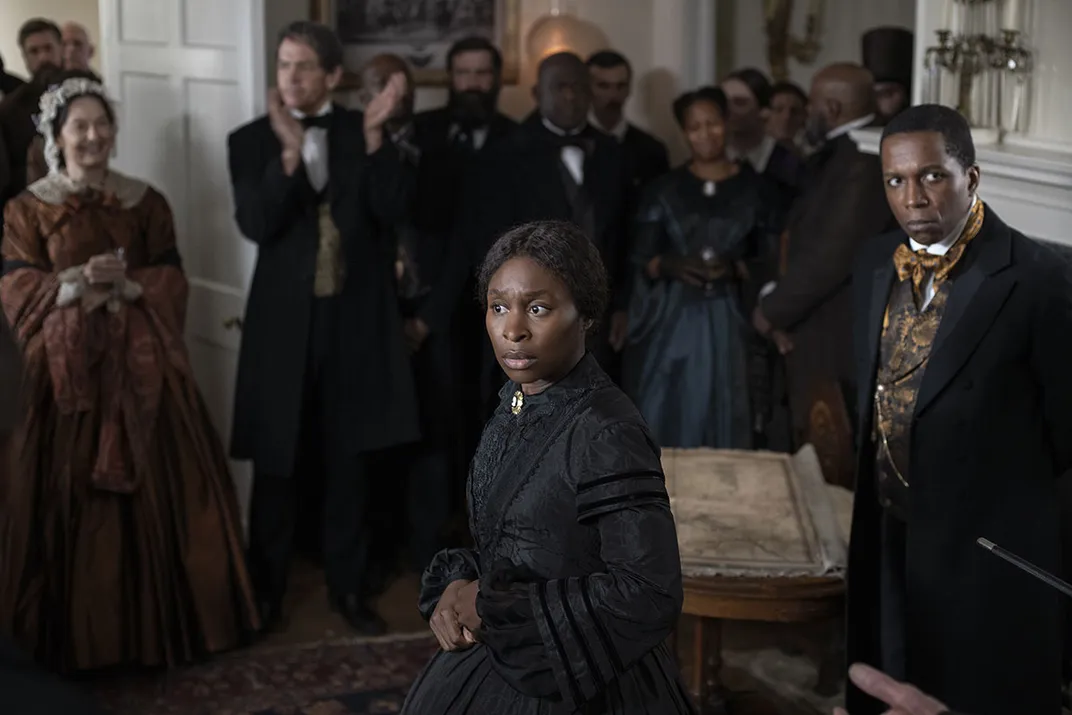
Despite the fact that she looms large in the public imagination, Tubman has rarely received the level of scholarly attention afforded to similarly iconic Americans. Catherine Clinton, author of the 2004 biography Harriet Tubman: The Road to Freedom, tells the New York Times she has even encountered people “who were not sure if [Tubman] was even a real person, or if she was a figure from folklore, like Johnny Appleseed.”
Director Kasi Lemmons says the new movie, which opens in theaters November 1 and is the first feature film dedicated solely to Tubman, aims to present a well-rounded portrait of the oft-mythologized figure, revealing “her courage and her womanhood so that [viewers] feel like you’ve actually spent time with this beautiful person.”
Lemmons adds, “I want you to feel like you had lunch with her.”
Previously, the abolitionist, suffragist and activist was immortalized mainly through children’s books and cameo appearances in dramas centered on other Civil War era figures. Her life has been reduced to broad strokes—escaped from slavery, helped others do the same, advocated for underrepresented groups’ rights—and her individual character overlooked in favor of portraying an idealized superhuman. What’s missing, says Elliott, who co-curated NMAAHC's “Slavery and Freedom” exhibition, is a sense of Tubman’s humanity: in other words, who she was “as a woman.”
Born Araminta “Minty” Ross between 1820 and 1825, the future Harriet Tubman came of age in antebellum Dorchester County. Headstrong even as an adolescent, she defied orders and was soon relegated from domestic work to more punishing labor in the fields. This familiarity with the land would prove helpful down the line, according to Beverly Lowry’s Harriet Tubman: Imagining a Life, providing a “steady schooling” in nature that proved much more advantageous than the “dead-end day-in-day-out tedium of domestic work.”
When Tubman was around 13 years old, she sustained a life-changing—and nearly life-ending—injury. Caught in a violent disagreement between another enslaved individual and his overseer, the young girl inadvertently bore the brunt of the latter’s anger: Although he had flung a two-pound lead weight across the room in hopes of stopping the male, the overseer missed his target and delivered a “stunning blow” to Tubman’s head.
Three days later, she was back in the fields. The wound eventually healed, or at least as much as can be expected without adequate medical treatment, but Araminta herself was forever changed. As Lowry notes, the teenager “began having visions and speaking with God on a daily basis, as directly and as pragmatically as if he were a guardian uncle whispering instructions exclusively to her.” Later in life, those who met her spoke of how she would fall asleep in the middle of conversations, dozing off before continuing as if nothing had happened.
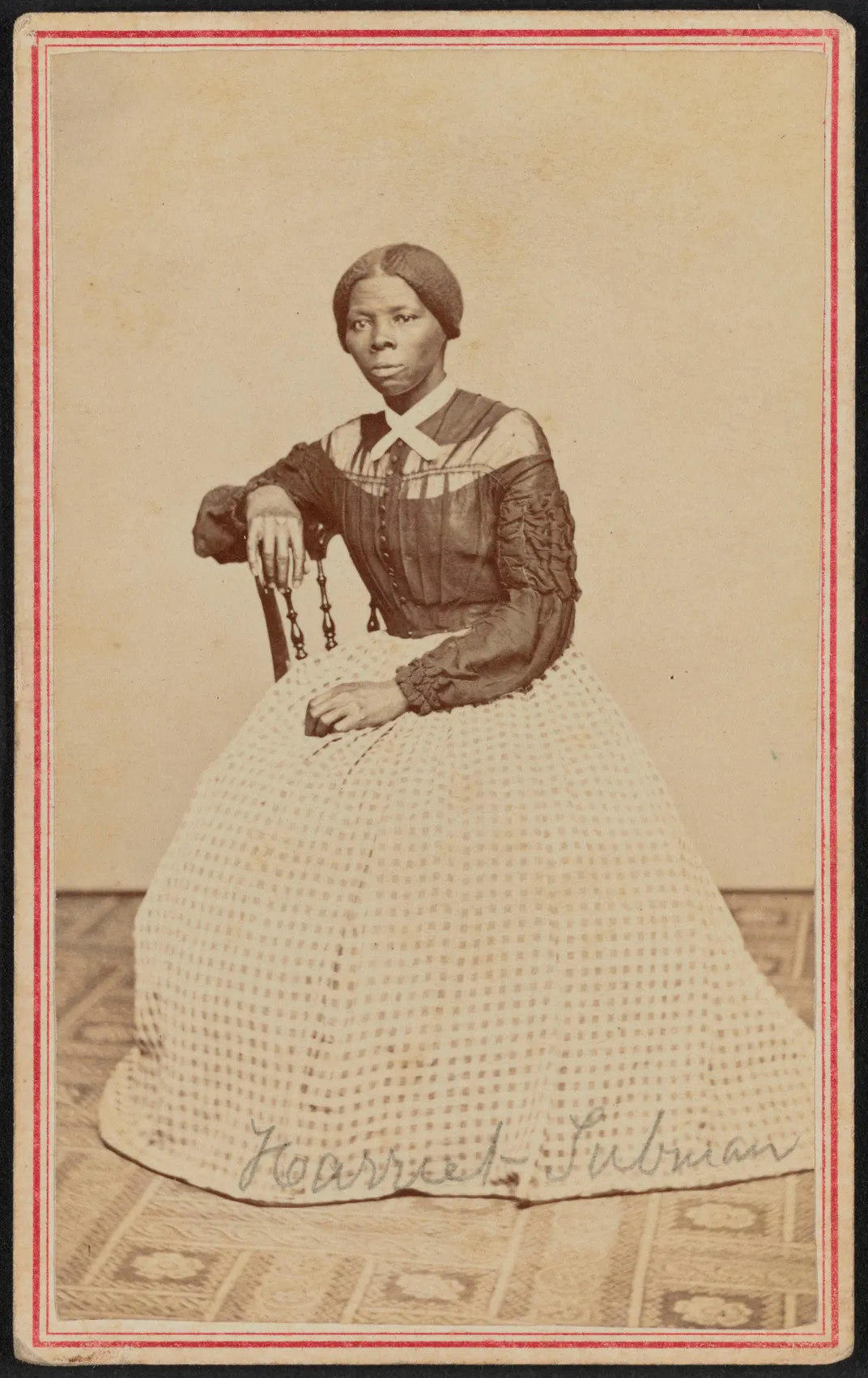
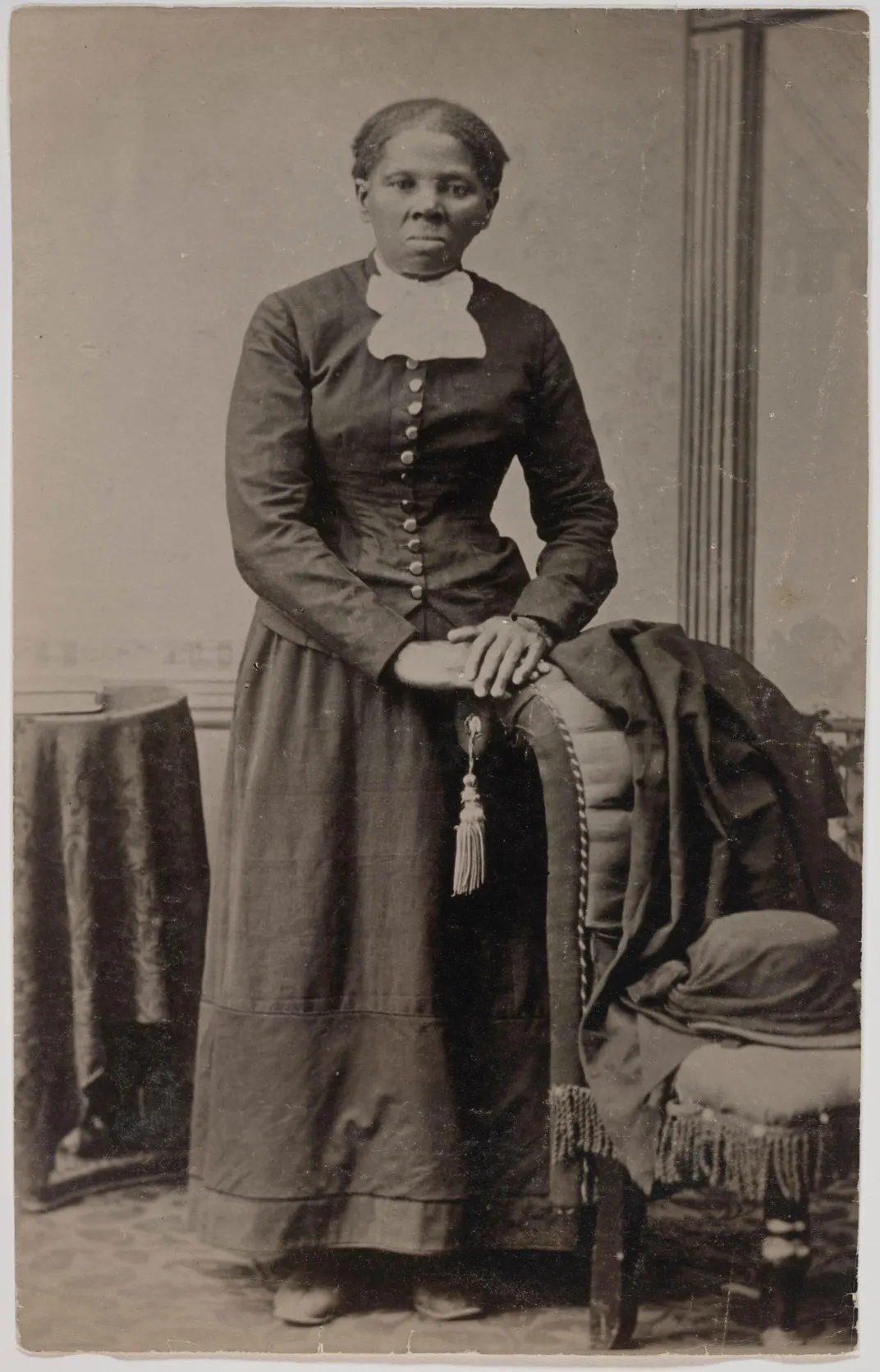
A defining moment in Tubman’s pre-escape life was the sale of three of her sisters to unknown slaveholders in the Deep South. Here, Lowry writes, the enslaved were not even given a last name; separated from their loved ones, they were harshly exploited as cotton workers and risked losing their sense of identity entirely. Once the sisters—Linah, Soph and Mariah Ritty—were sold, their family members never heard from them again.
Tubman’s decision to run stemmed in large part from a fear of sharing her sisters’ fate. Although she had successfully commissioned a lawyer to comb through an old will and prove that her mother, Harriet “Rit” Ross, should have been freed upon reaching age 45, Rit’s current owner, Edward Brodess, had opted to ignore his grandfather’s wishes. Rather than freeing Rit, who was now some 15 years past the stated deadline, Brodess illegally kept her—and by extension her children—in bondage.
On March 1, 1849, Tubman heard a rumor suggesting Brodess was preparing to sell her and multiple siblings to slaveholders in the Deep South. She started praying, offering up a dark plea to God: “Oh, Lord,” she said, as recounted by Bradford. “If you ain’t going to change that man’s heart, kill him, Lord, and take him out of the way.”
This “profane request” contradicted all of Tubman’s values, but as Lowry writes, “She prays it, and in years to come is willing to repeat that petition to a fellow Christian, word for word. Not only because in truth she spoke them, but also because she knows their shock value and understands the need to shock in order to re-create the time and the situation and the extremes to which it drove people.”
One week later, Brodess died, leaving Rit and her children at the mercy of his widow, Eliza. Faced with an increasingly uncertain future, Tubman prepared to flee.
By this point, she had married a free man named John and was perhaps considering starting a family of her own. Since children’s status mirrored that of their mother, all of the couple’s offspring would have been born into slavery—a fate Tubman probably tried to avoid by drawing Brodess’ attention to his grandfather’s will. Relationships between free and enslaved individuals were not uncommon, but as evidenced by a scene in the film in which Tubman’s owner warns John to stay away from his property, constraints imposed by slaveholders rendered such relationships tenuous at best.
In mid-September, Tubman convinced several of her brothers to join an escape attempt. Before making much progress, however, the brothers decided to turn back, fearful of the dangers awaiting them. Their sister, it seemed, would have to make the journey alone.
And so she did.
The film emphasizes its protagonist’s ability to commune with God to an extreme degree, attributing much of her multiple north-bound missions’ success to directions conveyed by a higher power. Reach a crossroads, for example, and Tubman pauses, listening for a moment before deciding where to go next.
“She has a fluid conversation [with God]; that’s the way she describes it,” Lemmons explains to Variety. “If you’re cynical and don’t believe that, you could say she has perfect instincts.”
Elliott says Tubman likely navigated through a mixture of instinct, careful assessment of her surroundings and “unyielding faith.” She also benefitted from her previous experience as an outdoor laborer.
“People did just pick up and run,” Elliott says. “But here’s this woman who had some degree of insight on how to navigate. . . . She may have had to figure out where to go, but [at least] she had some sense of the landscape.”
Guided by the North Star and aided by conductors on the Underground Railroad, Tubman traveled north to Philadelphia—an immensely impressive trek that cemented her standing in the city’s abolitionist circles. (Hamilton alum Leslie Odom Jr. appears in Harriet as abolitionist William Still, but many of the movie’s secondary characters, including Walter, a reformed bounty hunter who helps guide Tubman; Gideon, the slaveholder who owns the Ross family; and Marie Buchanon, a free woman and entrepreneur portrayed by singer Janelle Monáe, are fictionalized.)
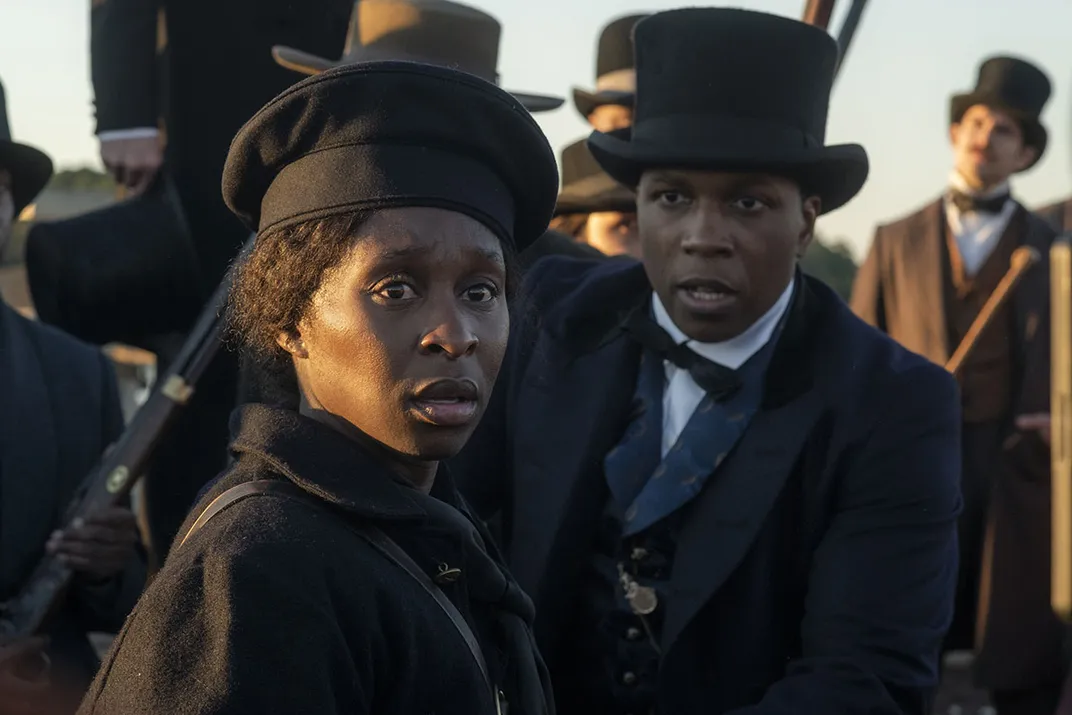
Erivo’s Tubman has an “air of a superhero nature,” according to Elliott, but as she points out, “How can you get around it? Because that was a tiny [5-foot-tall] woman who traveled [nearly] 100 miles by herself.”
Following Tubman’s successful escape, the film shifts focus to its subject’s rescue missions, exploring such threads as her attempts to reunite the Ross family in freedom, the aftermath of the Fugitive Slave Act’s passage in 1850 and the Underground Railroad’s little-known network of black maritime workers.
A particularly poignant moment centers on Tubman’s reunion with her husband John, who married a free woman following his wife’s departure. But while the film portrays him as a sympathetic character who hoped to join Tubman on her journey north and only remarried after hearing an unsubstantiated rumor that she had died during the escape attempt, the real John appears to have been decidedly less supportive, even threatening to betray his wife if she followed through on plans to flee.
When Tubman returned to Dorchester County in the fall of 1851, she found her husband comfortably settled in a new life. He declined to journey north with her, preferring to remain in Maryland with his new wife. Still, the trip wasn’t a complete disappointment: Eleven enslaved individuals joined Tubman as she wound her way up the East Coast, eventually finding safety in Canada—the only viable option for escaped slaves after the Fugitive Slave Act of 1850 gave bounty hunters unchecked power within the United States.
Elliott says Tubman’s tangible heartbreak upon learning of her husband’s actions offers a powerful example of her humanity. “She was a woman who loved,” the curator notes. “She love[d] deeply, obviously, and she had passion.”
Speaking with the Hollywood Reporter, Harriet director Kasi Lemmons adds, “Harriet was motivated by love of her family. That transcends race and boundaries.”
In popular lore, Tubman is often portrayed as a benign, grandmotherly “Moses” figure. The fact that she was a young woman when she escaped bondage is overlooked, as is a sense of her fierce militant nature. According Kate Clifford Larson’s Bound for the Promised Land, Tubman carried a pistol during rescue missions, “telling her charges to go on or die, for a dead fugitive slave could tell no tales.” But this aspect of the trips is rarely highlighted, particularly in the children’s books where Tubman is most often placed front and center.
“These books defanged her, declawed her, to make her more palatable,” Lemmons tells the New York Times. “Because there’s something quite terrifying about the image of a black woman with a rifle.”
At the same time, Elliott explains, Tubman had a taste for the “delicate things” in life, including fine china and refined clothing.
“I always call her an iron fist in a velvet glove,” Elliot adds. She wanted to love and be loved and “appreciated looking pretty,” but she “had no problem with getting dirty if it meant saving a life.”
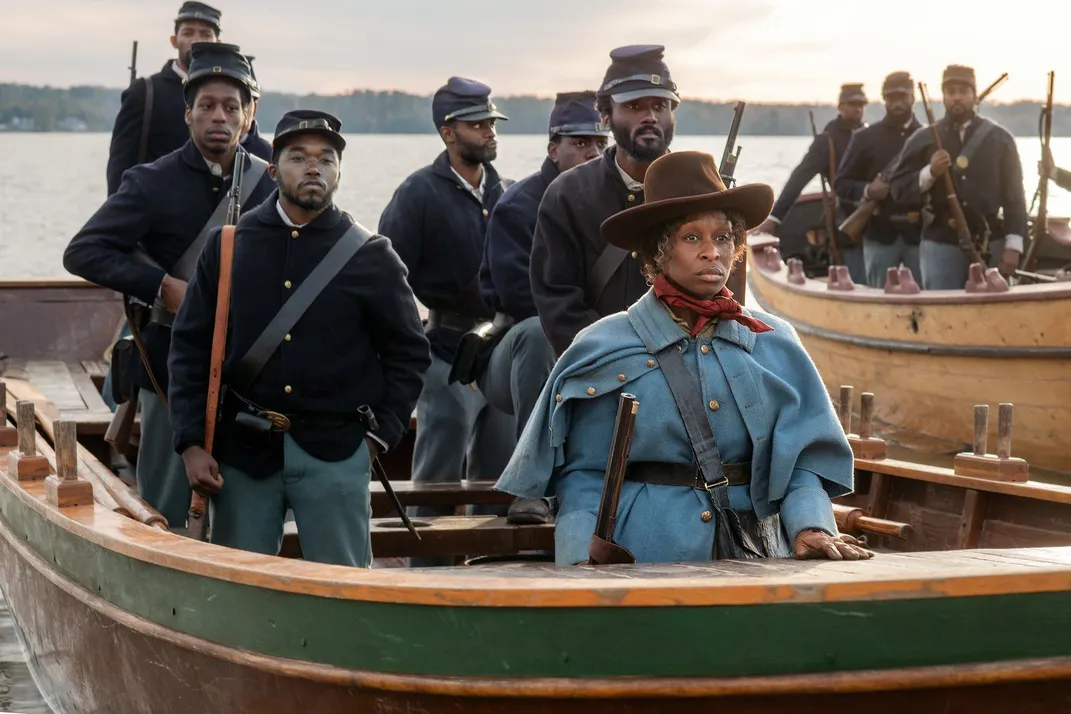
The American Civil War began on April 12, 1861, just months after Tubman’s final rescue mission in late 1860. The film speeds through this period, pausing briefly in June 1863 to reference the Combahee River Raid—a military expedition that freed around 750 enslaved people and was the first of its kind to be led by a woman—but focusing largely on the decade between its heroine’s escape and the end of her Underground Railroad days.
Tubman died of pneumonia on March 10, 1913, around the age of 90. Given the constraints imposed by its 10-year timeline and two-hour runtime, the movie does not address the bulk of this long life, instead opting to retrace the most well-known sequence of events. Among the chapters missing from the film: Tubman’s time as a Union spy, her 1869 marriage to Nelson Davis—a soldier some 20 years her junior—and the couple’s 1874 adoption of a baby girl named Gertie, her work as a suffragist, neurosurgery undertaken to address her decades-old brain injury, financial hardship later in life, and the opening of the Harriet Tubman Home for the Elderly in 1908.
Larson, a Tubman biographer and one of the film’s historical advisers, tells the New York Times she wishes Harriet was “completely, totally accurate.” Still, she adds, “It’s Hollywood. And they got Tubman. Kasi Lemmons really got her, and made her this militant radical, while also conveying her love for her family. And that’s who Tubman was.”
Ultimately, Elliott says, “I hope that viewers seek more information on those different aspects of slavery and freedom,” from marriage between enslaved and free people to the terrifying reality of leaving one’s home and living among people who were born free.
Going forward, Elliott concludes, “There is a lot of material out there for Hollywood to tell the unvarnished truth and to humanize the experience of African-Americans.”
Many artifacts from the life of Harriet Tubman, including her hymnal and her shawl, are on view at the Smithsonian's National Museum of African American History and Culture. The film Harriet will be screened at the museum Thursday, October 31, at 7 p.m.
:focal(1191x156:1192x157)/https://tf-cmsv2-smithsonianmag-media.s3.amazonaws.com/filer/a5/fd/a5fd7990-428e-48b0-9a70-54cce8513842/screen_shot_2019-10-28_at_95646_am.png)
/https://tf-cmsv2-smithsonianmag-media.s3.amazonaws.com/accounts/headshot/mellon.png)


/https://tf-cmsv2-smithsonianmag-media.s3.amazonaws.com/accounts/headshot/mellon.png)